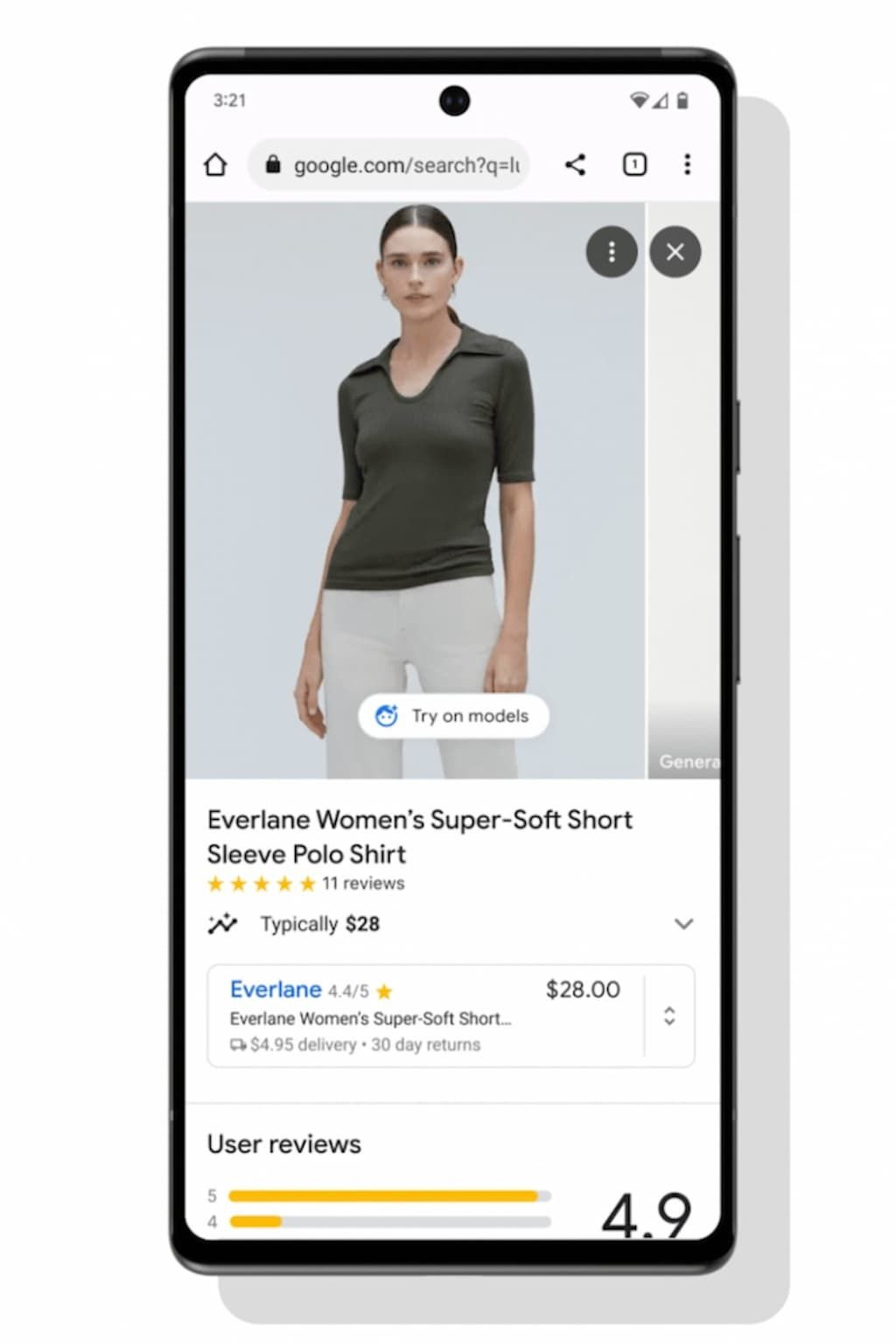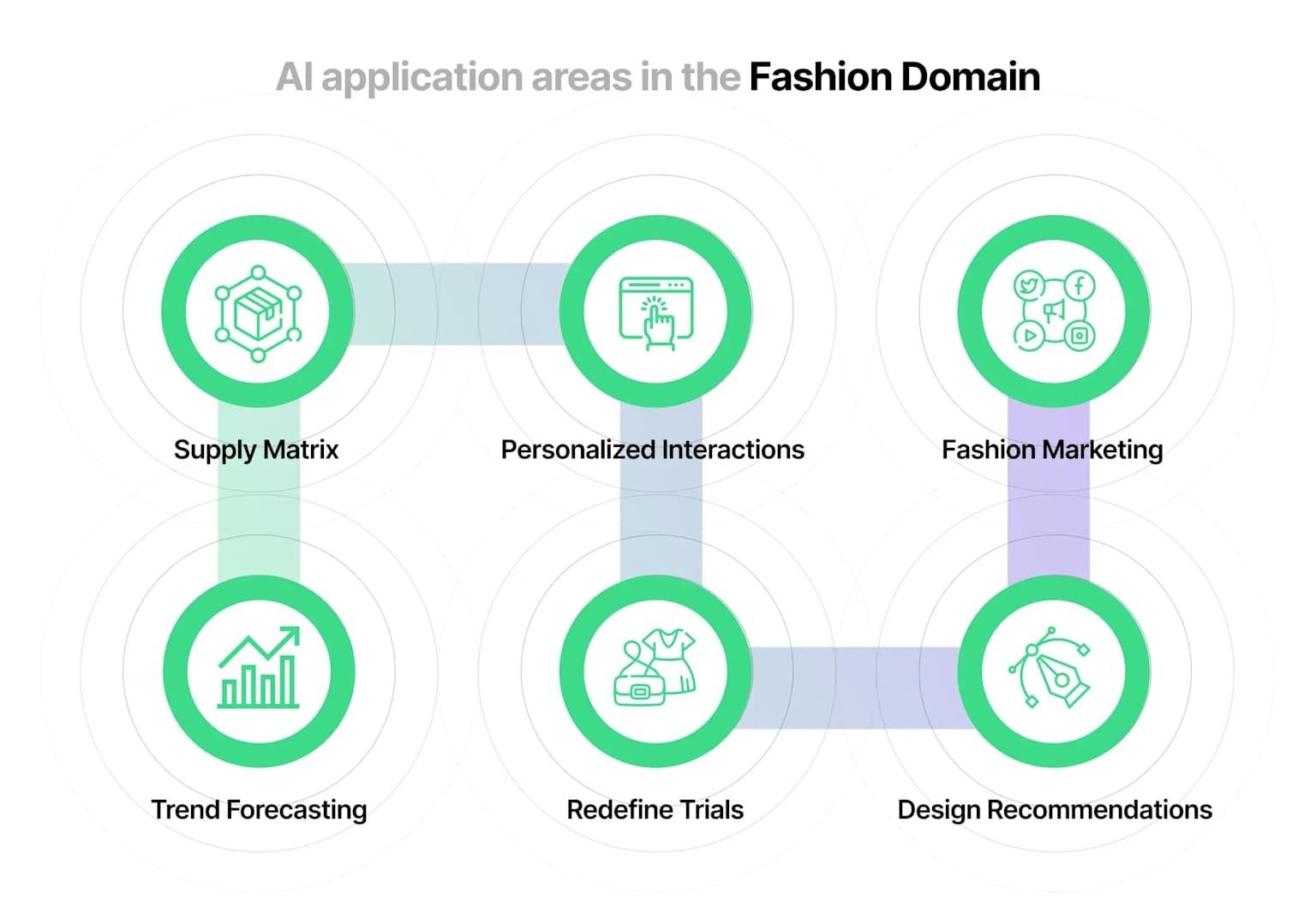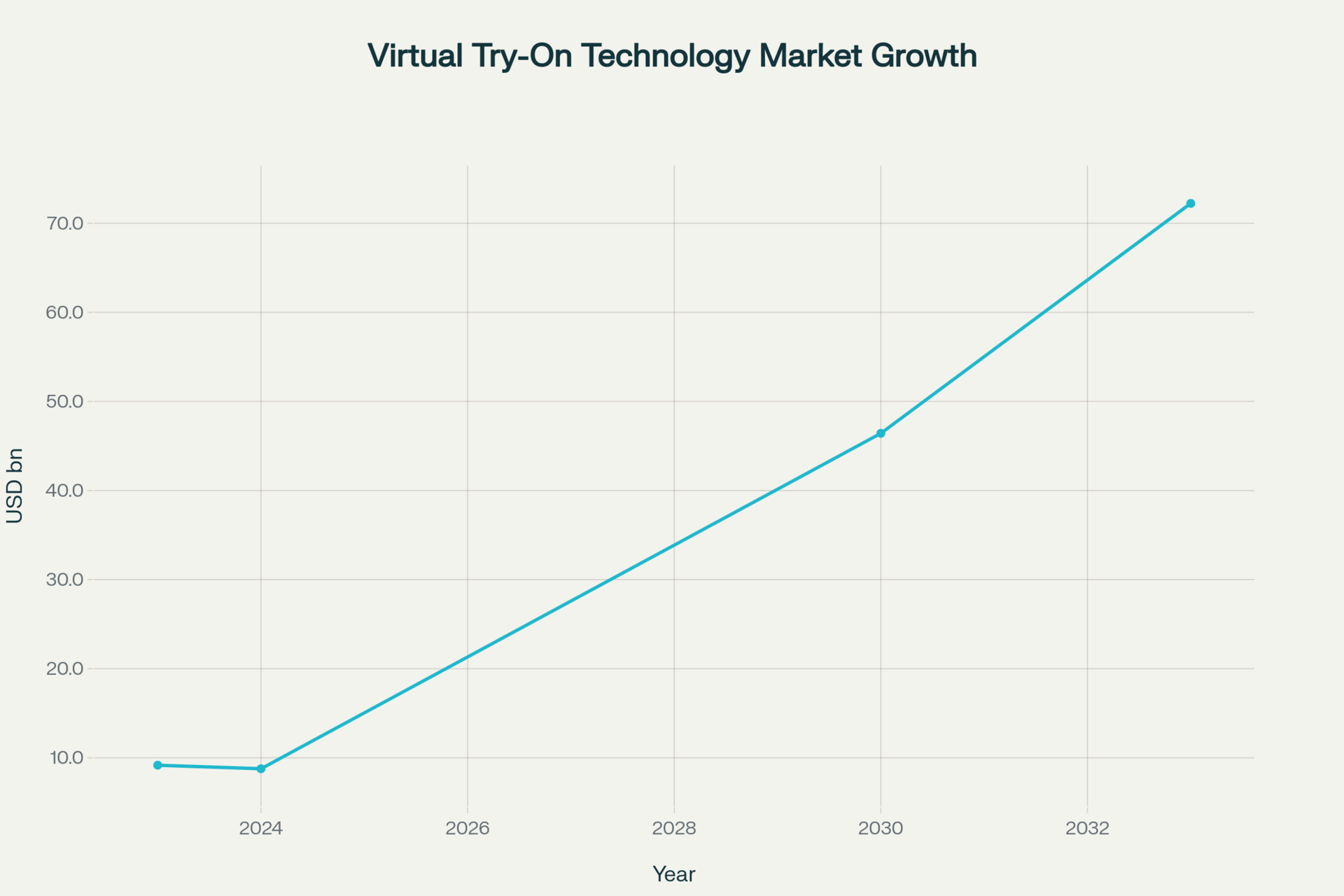Because "it looked different on the model" is officially retired.

Ever stood in front of your closet wondering how that online dress would actually look on you? Those days of shopping roulette are ending. Google just rolled out personalized AI try-on technology that's not just changing how we shop—it's rewriting the entire retail playbook.
Here's what most people don't know: Google's Shopping Graph now processes over 50 billion product listings hourly, and their new AI try-on feature is quietly becoming the most sophisticated fashion technology ever deployed at scale. While everyone's talking about ChatGPT, Google has been building something that could make physical fitting rooms feel ancient.
The Secret Behind the Magic
Google's virtual try-on isn't just overlay technology—it's powered by advanced diffusion models (the same AI architecture behind DALL-E) specifically trained to understand how fabrics behave on real bodies. The system analyzes how different materials "drape, fold, cling, stretch and form wrinkles" across thousands of body types.
But here's the kicker: early data shows virtual try-on images receive 60% more high-quality views than standard product listings. Shoppers aren't just glancing—they're engaging deeply, trying an average of 4 different looks per product.

Key AI application areas in the fashion domain, including personalized interactions and design recommendations
The Numbers That Will Shock You
The Virtual Try-On (VTO) technology market isn't just growing—it's exploding. From $9.17 billion in 2023, it's projected to hit $72.23 billion by 2033. That's a staggering 26.5% compound annual growth rate, making it one of the fastest-growing tech sectors globally.

Virtual Try-On Technology Market: From $9B to $72B by 2033
But the real story is in the conversion data. Estée Lauder saw a 2.5x lift in conversions after implementing AI-powered try-on. Cosmetics? They achieved a 200% increase in conversions. These aren't marginal improvements—they're game-changers.
What Google Isn't Telling You
Here's the inside scoop: Google's AI Mode (their new shopping experience) uses "query fan-out" technology that breaks complex searches into multiple parallel queries. When you search for "comfortable running shoes for flat feet," it simultaneously researches arch support, breathability, and temperature suitability—then matches you with products that tick every box.
The technology gets creepily good at predicting what you want. Google's system can now factor in location-specific needs (searching for a dress for "New York in April" considers the city's typical weather patterns), price sensitivity, and even your style evolution over time.
The Retail Reality Check
While consumers are loving the experience, there's a fascinating paradox emerging. Some studies suggest that hyper-realistic virtual try-on can actually reduce impulse purchases. When customers see exactly how something looks, they make more informed decisions—good for satisfaction, challenging for retailers banking on "benefit of the doubt" purchases.
Smart retailers are adapting. They're using this technology not just for try-ons, but for data mining customer preferences, optimizing inventory, and creating hyper-personalized marketing campaigns.

Virtual Try-On Impact: Driving Higher Engagement and Conversions
Your Shopping Experience Will Never Be the Same
The early adopters—particularly Gen Z users showing "extremely positive" engagement—are already treating virtual try-on as standard.
The bottom line? We're witnessing the birth of truly personalized commerce. Google's AI try-on is just the beginning of a future where every shopping experience feels custom-built for you. The question isn't whether this technology will transform retail—it's whether traditional retailers can adapt fast enough to survive the revolution.
While Google hasn't announced an official timeline, features like this typically begin a staggered international rollout 6-18 months after a successful US debut. Expect major markets like India and Europe to be high on the list once the feature is established..
